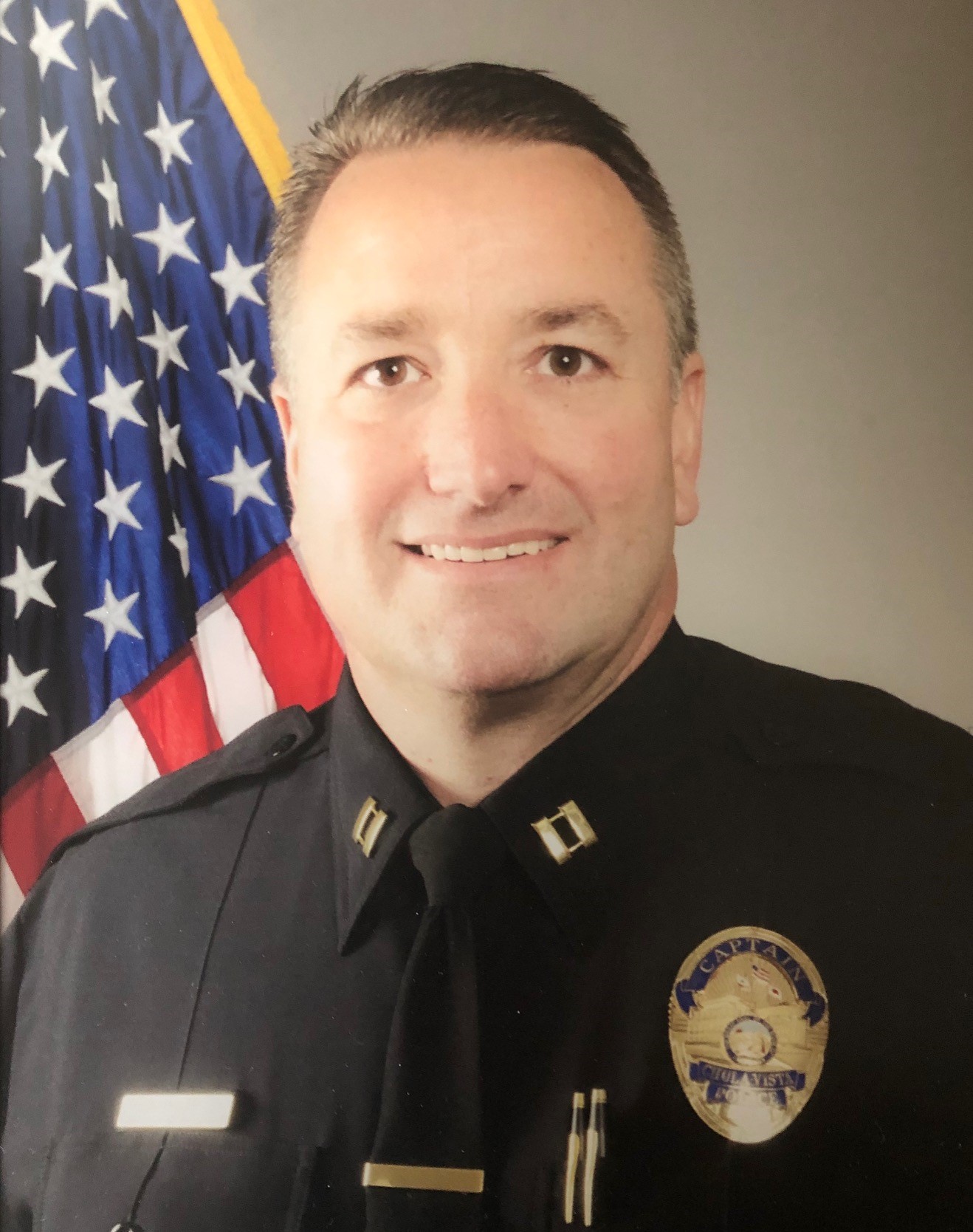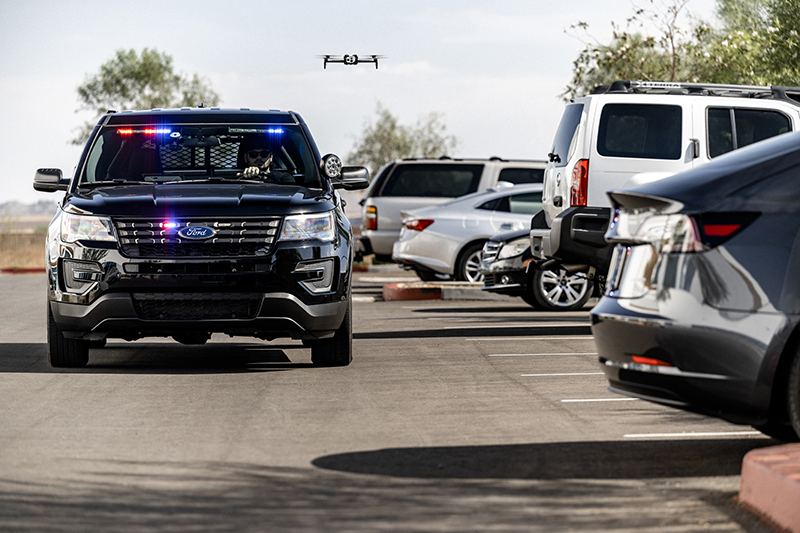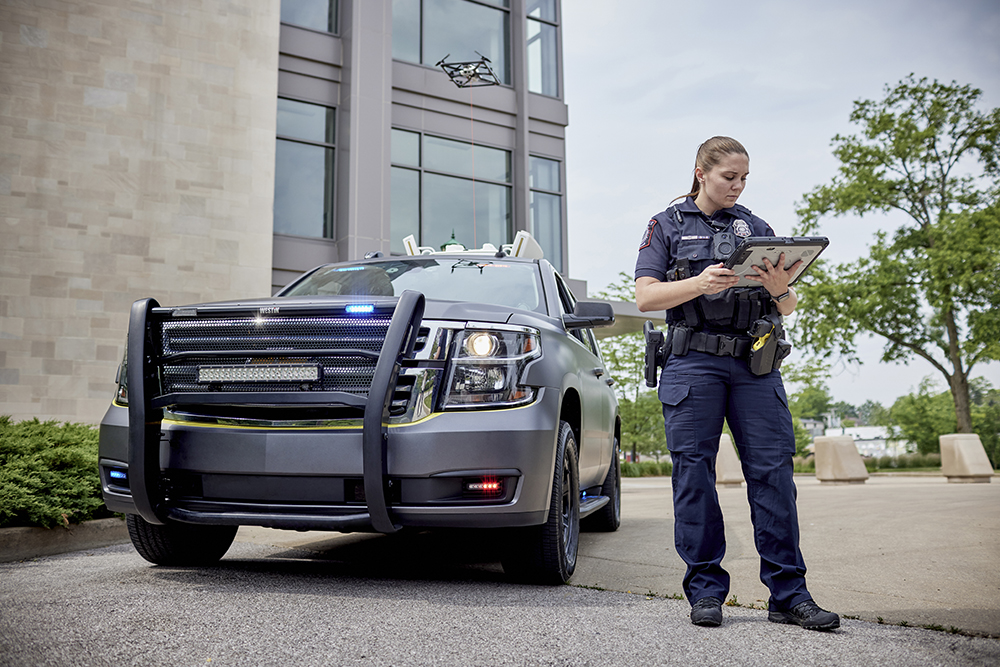While we’ve explored what it means to build a drone program, success with doing so always depends on the approach and industry. How drones can be utilized in agriculture is very different from the way they can create value in construction, but those distinctions are especially evident in the public safety sector, where success isn’t just about a given task or project, but also about policy, process and the general public.
The barriers to drone adoption in public safety & emergency services are real but aren’t insurmountable, which is something that agencies like the Chula Vista Police Department and the Los Angeles Fire Department pioneered many years ago. Those efforts are directly connected to recent headlines like the Wichita Police Department announcing a new drone program, underscoring how essential those programs were to the present and future of the drone industry.

Vern Sallee was one of those early visionaries, as he worked with Chula Vista Police Chief Roxana Kennedy to pioneer the concept of Drone as a First Responder (DFR) in public safety. He’s taken that experience with him to his current role at Axon, where he serves as the company's strategist on public safety drones with a specialty in helping agencies implement DFR programs. We caught up with him to explore how things have changed from those early days, what role transparency with a community plays in the drone adoption process, the one thing he thinks more agencies should be looking into today, and more.
Jeremiah Karpowicz: The last time we talked, you outlined the importance of putting real-time information in your officer’s hands. Back then, it felt like there was hesitance and even doubt around whether or not that was really possible to do with a drone, but you proved the capability and value, and that proof has only gotten that much more robust since then. Can you talk a little bit about how the perception of drone technology on the part of users and even the public has changed over the past few years?
Vern Sallee: I would say there's been a positive shift with regard to agencies adopting drone solutions, and much of that is on account of how agencies have learned how to use drones as engagement tools. More and more departments understand how they can use their drone program to share information about agency operations. It is also important to explain to the community exactly how they’re using this technology.
It's very important for agencies to be transparent and not just tell the community what they’re doing with a drone, but also outline what they aren’t doing with those drones. That’s why my advice to most agencies is not to use drones for random patrol. Rather, agencies should primarily use drones in response to 911 calls, emergencies, warrants and similar critical incidents.
Those are situations where people might make assumptions about what sort of images and information a drone is capturing and where all of it is going.
Which highlights how important it is to establish a sense of transparency with a community. But what can be done with the data today also gets at how things have changed with the technology itself.
Back in 2017 and 2018, drones and real-time technology were mostly in their infancy. Both have matured quite a bit, to the point where today you can sync up info coming from a drone with data from body-worn cameras, vehicles, fixed cameras and various other places. It's very sophisticated.
All of that is allowing agencies to create real-time crime centers, where they gather this data in one place and use it to solve crimes, resolve incidents in a timelier manner and restore order. Agencies are seeing these success stories so more and more will be adopted as communities really see where all of this technology is helping and making an impact.
What kind of a practical difference has that meant to the officers that are actually using the technology?
In policing, you typically have your youngest or least experienced officers on the frontline. Those are the people responding to 911 calls and various incidents, trying to resolve complex problems with limited experience. With real-time operations technology that’s enabled through drones and body-worn cameras, greater supervision and oversight can be enabled by the police department.
A supervisor with years of experience can watch how their officers handle a call. Watch commanders can see operations in real-time, providing a much better sense of exactly what officers are doing to make sure that they're following the training, that they're following policies and procedures. Training is key to safer outcomes and having more visibility into operations in the field allows for a continuous loop of training and feedback that is more proactive than reactive.
We're observing these solutions address personnel challenges, crucial when some agencies are facing up to a 20% shortfall in officers. More and more agencies are leveraging technology to be a force multiplier and give their officers more information faster so that they can resolve the situation and free up resources, allowing officers to deliver the highest level of service to the community.
How much of the ability to provide this kind of service is tied into a culture of professional aviation that you’ve previously talked about? What does it mean to instill that culture across a department, regardless of whether they’re taking to the air for the first time or want to take their established drone program to the next level?
Drones are considered aircraft and they are in the national airspace. So in that sense, anyone who’s flying a drone is a professional aviator. That’s why building a professional aviation culture is so crucial.
But it doesn't necessarily come easy or cheap; you have to invest in training. That’s why my advice is always to start at the ground level with the right training, the right supervision and the right management. Ensure you build that culture of professional aviation from the start, to get your pilots the right equipment, the right software and services, and also the right range of training so that you can build confidence on an individual level and as a department.
Whether agencies are thinking about starting their first drone program or adopting the latest tech, this eBook from Axon provides expert guidance to launch, grow and optimize a public safety drone program.
That’s just one of the multiple resources that the Axon team has put together to support public safety departments of all sizes, but despite the availability of those types of resources, do you find that some are just on the lookout for an “easy button” with the technology in a way that is detrimental?
There's no “easy button” yet, but I will say that we’re trying to make it more mainstream and simpler for agencies to do.
One of the main reasons I came to Axon was because they were one of the few organizations that wanted to create wraparound services for agencies to be able to establish a drone program with a culture of professional aviation. That means we provide services that range from initial training, to ongoing training, to technical support and beyond. It’s everything from very basic drone operations all the way through drone as a first responder, which can be really advanced.
There will always be challenges, but even the smallest agency can afford to have a drone program, almost regardless of their budget.

I want to more fully explore the budget issue, but is that what most often stops agencies from moving forward? What does it mean for an agency to get past these initial challenges in order to establish a foundation that allows them to eventually scale a drone program?
From my perspective, the most important element of policing is community relations. The human connection of serving the community and making people understand that they have a stake in a voice and how they are policed is that foundation. One part of that service should utilize technology, but you should never assume that it's going to do your job. Or that it will automatically make things better without a lot of thoughtful policies, procedures, processes, and engagement, to ensure that the tool fits the mission.
That’s why part of my job at Axon is to help agencies, specifically with drones but also in general, imagine and sort out how technology can enable this community service. Communities have learned to accept that these types of innovations are going to keep them safe, but as part of that, they’re also asking police departments to be transparent and to have a voice when it comes to policies and procedures and even community surveys. They want to hear those police departments ask, “how did we do?”
These communities want to make sure that supervision and management have strong internal oversight to ensure police officers are actually following established protocols. The more that you can get that information out to correct leaders to spark the conversation, the more successful your program.
We've talked about many of the available resources, but what else can department leaders be doing when it comes to gathering the info they need to start a drone program? Would you recommend reaching out to other public safety professionals? Or certain vendors or SME's that can support this process?
Being that sort of resource is literally what my role is at Axon. For agencies that are starting a program from scratch or that are up and running and need further guidance, I’m here and we’re here to provide that kind of support.
Harkening back to my role as a police captain though, I would always accept and understand what any vendor brings to the table in the context of my duty as a public official is to make sure that I'm getting the best value. That’s why I would make sure that I was connected with organizations like the International Association of Chiefs of Police, to capture insights on the best practices they’ve established with drone technology. The Police Executive Research Forum (PERF) has also done a research paper on drones and policing that I was part of when it was published in 2020.
I would encourage anyone who wants to that that next step to talk with vendors like Axon but to also search for and connect with independent resources to ensure that everything you’re hearing and then planning to do is in the best interest of the agency and, ultimately, the general public.
What would you say to anyone thinking they'll wait a few years for the technology to improve before considering adoption? Going back to challenges with budgets, I’m sure you’ve heard people say it’s too expensive or they want to wait until the costs come down, and there’s some truth to that.
Financial barriers and limitations are real, but you can buy a small drone for as little as $600. There are going to be costs associated with training and other accessories, but to get up and going you’re not talking about anything more than $5K.
Some agencies might say $5K is a lot of money, but when people balk at that number, I always point out the fact that a radio on a police officer's belt costs that much, or that a fully outfitted patrol car costs $70K. When you start looking at it from an equipment perspective, it’s really attainable to create or bolster an aviation program that enables real-time, aerial situational awareness.
For anyone who wants to wait, you have to weigh that hesitancy against where the department or program is in a few years. Because sure, that $5K today might be $3K in a few years, but what is the cost of the experience you’re not enabling? You can start small and build over time, which is directly connected to our “crawl, walk, run” adoption process. Building your program right now allows you to gain experience that adds officer safety and community safety in the present, which is important.
We’ve had a lot of conversations with departments that want to do some pretty advanced operations, but they should have a lot of experience under their belt with an already-established professional aviation program to make those successful. It’s not always easy, and as much as we might want to sell them the most advanced piece of equipment, our focus is on providing the right technology, at the right time, to make someone successful.
Wrapping things up, is there something specific you're looking forward to seeing change or take shape with the drone industry in 2024?
What used to be a smaller market of drone developers is now starting to expand and grow with more companies joining the space which should bring forward some exciting new solutions and options for a number of industries, including for law enforcement. I think that will only get better. There are also some incredible opportunities to integrate multiple solutions into a single platform to make things more scalable and more affordable for agencies, and that is beyond exciting.
For us, we want to bring the right drone to the customer. So that excites me that our customers now have more opportunities to buy the product that they want.
What's one thing that you know you can do with drone technology right now that you want more people to realize? What do you want the audience to know about what it would take for them to utilize or take advantage of it?
If you're just flying drones, and not live-streaming so that only the pilot sees what's going on, you're really missing out.
The value that drones can best create is connected to real-time situational awareness, which goes beyond the pilot. It’s really easy to spread out that situational awareness to other decision-makers who have more experience and can strategize or take action while the pilot is focused on piloting a drone safely. That’s why live streaming is critical.
When we started in 2015, that was much more difficult to do. It became a bit more mainstream in 2018, but today, there's just no reason to not do it. Any agency that doesn’t have a drone program should think about what it would mean to provide better situational awareness across as many people as possible to enable greater accountability. Thinking that through is really going to accelerate your program, regardless of where you are with it.
















Comments